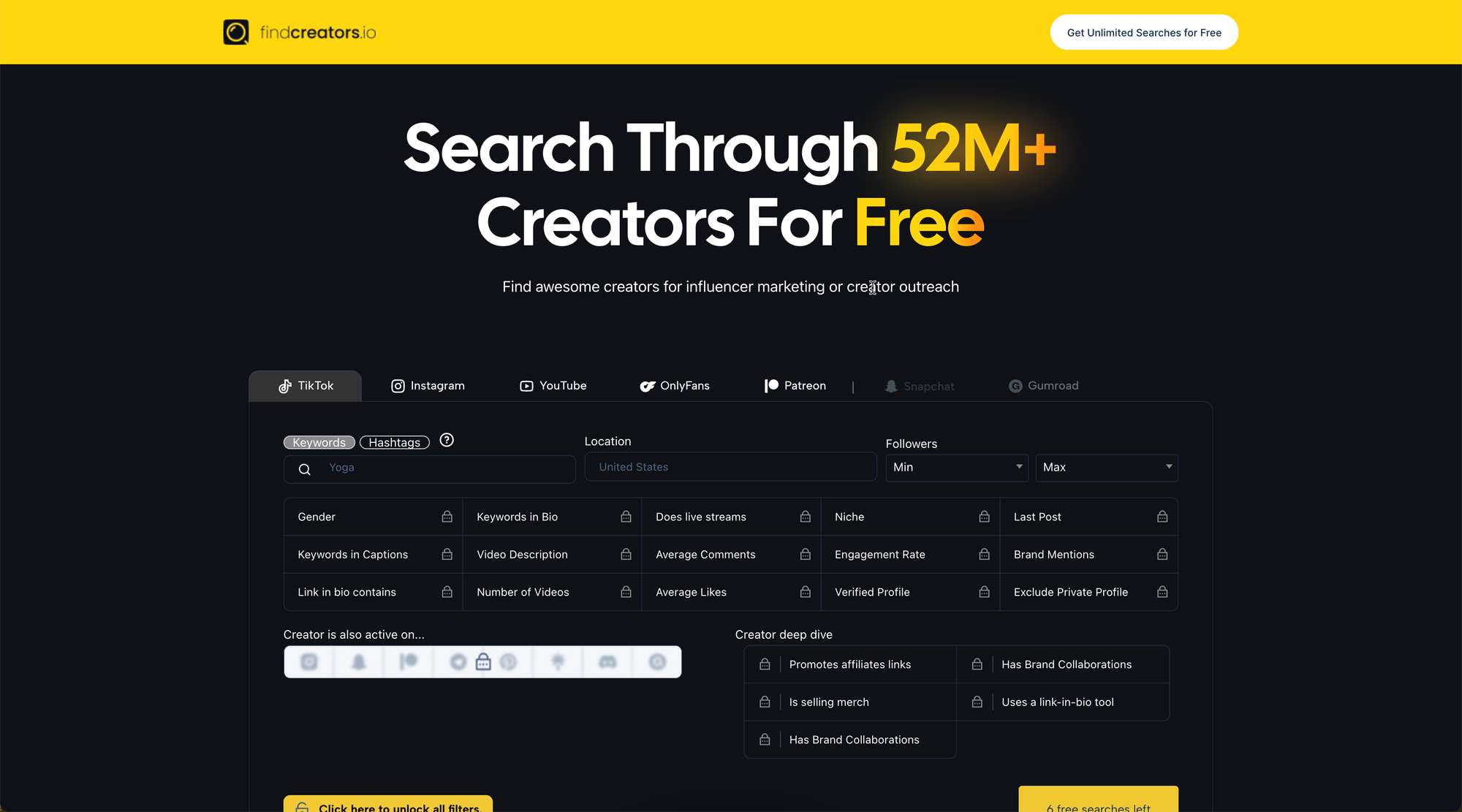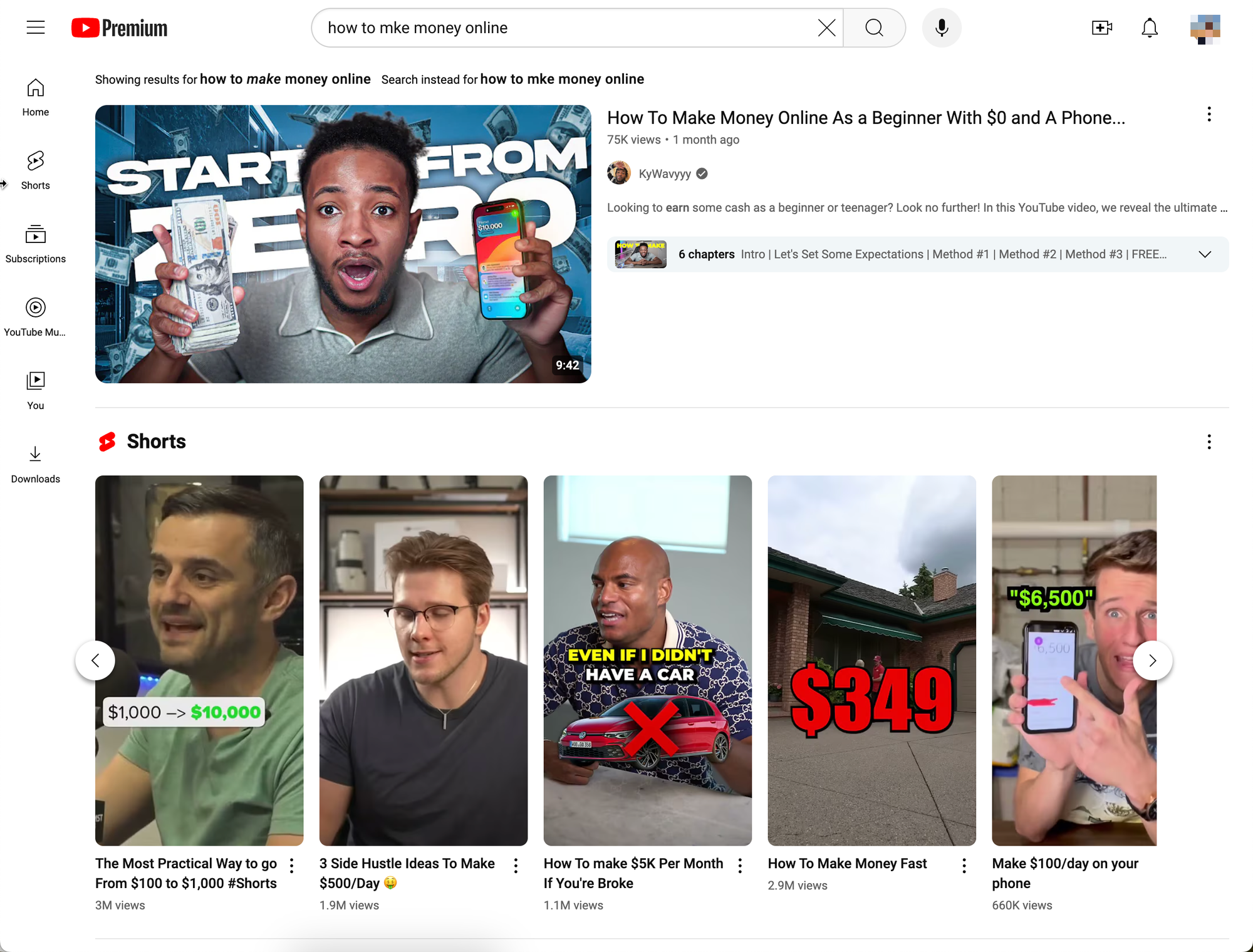Growth operating is a way to make money online - but what is it and how does it work? Read this article to find out.
Key takeaways
- Growth operating helps creators monetize existing audiences by developing their own digital products instead of affiliate marketing.
- Growth operators don't need personal brands since they work behind-the-scenes with established influencers and creators.
- The business model involves three components: creating digital products, managing traffic/customers, and building online communities.
- Finding the first creator partner is the biggest challenge due to competition and lack of initial case studies.
- Make money online niches offer the most opportunity since audiences are already motivated to purchase products.
If you’re looking for ways to make money online, you’ve probably come across plenty of YouTube videos, influencers with large followings on X or Instagram, and gurus or coaches who seem to have been in business for several decades.
You may have gotten the sense that in order to be successful with online businesses, you need to have a large audience. The truth is, you don’t need any following or fanbase. Sure, MrBeast makes hundreds of millions of dollars per year, but you don’t need a massive audience like his.
However, you can work with people like this, leveraging their following, to build a steady income. In this article we’re going to discuss a “new” (more on this below) business model called “growth operating” and how you can get started with it.
What is Growth Operating?
Growth operating is a business model that has recently gained popularity in the make money online space. But, the reality is that growth operating has always been around, it just has a new name now.
Let me explain: At its core, an online business (and really any business) makes money with two mechanisms: First, by having people to buy its product, or “traffic”. And second, a product for people to buy, or the “offer”.
The more traffic and the better the offer is, the more money the business will make. Businesses generate revenue by getting more traffic (through cold outreach, paid ads, organic SEO, etc.) and having a higher conversion rate on their offer (providing more value, offering a discount, better service, etc.).
You can charge money by helping with one, or both, of these levers.
The clients of growth operators typically have the traffic side of the equation figured out. They’re influencers with large followings on social media and people who trust them and who want to buy what they sell.
At this stage, influencers and creators are likely involved in some form of affiliate marketing. You’re probably familiar with the basics of affiliate marketing in which the affiliate will market another brand’s product in exchange for a percentage of the sales.
Affiliate marketing is great for creators because they don’t need to worry about fulfilling the service, dealing with customer support, or any of the many operational headaches that come with running a business.
But, the downside is that creators lose out on revenue as well as the ability to sell their business. If they’re only selling someone else’s product, no one will want to acquire their entity.
Enter: Growth operators.
Growth operators help creators create their own product, the offer, and manage everything from finding customers to managing the backend operation.
For this article, we’ll define growth operating as solely involving digital information products, but technically, growth operators could work with physical products. (Take PRIME for example, Logan Paul and KSI “founded” the brand, but it’s in partnership with a beverage manufacturer called Congo Brands out of Louisville, KY. Who knew!)
In the next section we’ll go more in depth on how it all actually comes together. Also, here is a video we here at Whop produced on the topic:
How Does Growth Operating Work?
Now that you know what growth operating is, let’s go into detail on how it actually works. There are three main parts to a growth operating business:
- The Product: This is your offer. Offers typically come in the form of a course (video, written, etc.), coaching services, and community access. Creators typically sell a low-ticket product, like an eBook, for just a few dollars in order to generate more leads for a high-ticket product like coaching.
- The Traffic: These are your customers. As a growth operator, you’ll be in charge of finding new customers which could involve running ads or helping create more content for organic traffic.
- The Community: These are how you bring the two together. Because one of the main selling points of a creator’s community is access, you need to have a place to facilitate this. Communities can be housed on a platform like Whop, which is the best place because of all its features; or in Discord, Telegram, Skool, and more.
The Product
As mentioned above, the product is the thing that you’re actually marketing. And typically, there are multiple products.
You and your creator partner will create something that coincides with their audience. For instance, a health and fitness coach could offer a recipe book or a videographer could create a course on how to use CapCut.
The options are endless, but you need to think of something that your product will value enough to pay the price that you want to charge.
The Traffic
This is the hard part. Anyone can spin up an eBook or record a few videos over a weekend, but far fewer people can get those into people’s hands.
Naturally, your creator partner will already have at least a little bit of traffic. Whether it’s their followers or email list, they have people who listen to what they say.
But how do you pour fuel on the fire? With ads.
Paid advertising can be done with Google, Facebook, Instagram, TikTok, and more, but it’s costly and time-consuming. In order to be a growth partner, you need to understand the platform you’re running campaigns on and have a solid method for producing creatives and testing angles.
The Community
This is another challenging part of growth operating — having the backend infrastructure to manage all the coaches, members, communication, and more is challenging.
In the past, this was done in Facebook Groups, Slack and Discord channels, and digital products would have to be emailed.
Who Should Do Growth Operating?

Depending on your experience with personal brands, paid marketing, and community management, growth operating could be the perfect business model.
If you excel in these areas, then consider growth operating.
But, if you haven’t ever done any of these things, it’d be better to focus on just one skill and master that, rather than trying to sell a creator on your ability to do all of them.
So, the people who should do growth operating are those who have been in the internet marketing space for a reasonable amount of time and have a bit of experience in everything. If you’re looking for a vehicle to scale those skills, growth operating may be it.
Pros of Growth Operating
Here are the biggest advantages of the growth operator business model.
You Don’t Need a Personal Brand
If you’re someone who has spent their time learning, practicing, and studying and hasn’t taken the time to invest in building your personal brand, then growth operating could be the right vehicle for you. Because you’re acting as the “behind the scenes” person, the size of your following doesn’t matter at all.
Ability to Scale
Build once, sell many times. Products that growth operators are scaling aren’t agency services based on hourly rates or deliverables. They’re mainly courses, info products, and access to a community.
This allows them to be highly scalable businesses. Perhaps you’ve been a media buyer or content creator in the past, getting paid an hourly rate or monthly retainer, but it’s tough to really build that up past what you’re personally able to do. With growth operating, you’re applying those skills, but you’re not selling them. Rather, you’re selling a digital product.
Potential for Acquisition
This isn’t the case with every client, but there are scenarios in which a growth-operated business could be bought by another creator or business. At a certain point, they’re not tied to the creator’s name so it functions as a standalone operation rather than someone’s email list or social media account.
For the right buyer, these businesses could command a strong enterprise value.
Cons of Growth Operating
The business model isn’t perfect, here are some disadvantages.
Hard to Find a Partner
As is typically the case, getting your first client is the biggest hurdle you’ll face when starting out. Remember, creators are running their own businesses as well. They’re shooting content, working with brands on affiliate deals, and interacting with their audience. Some will also have a newsletter and other parts of their organization they need to take care of.
So finding the right creator partner and convincing them to work with you, especially without case studies, will be challenging. Not to mention, they’re flooded with DMs and notifications as they’re already popular on social media.
Building the Infrastructure
Growth operating for a creator has a lot of moving parts: There’s community management, product delivery, coaching calls, etc. In the past, this would all have to be done using several different tools and software: Google Meet, Slack or Discord, email provider, and the list goes on.
Now, Whop takes care of all of that for you. You can create your own whop and have custom apps that allow you to communicate with your community members, set up coaching calls, deliver digital products, and so much more. We also have 24/7 technical support and in-house software engineers to help with features that you may need.
How to Start Growth Operating
Although it’s more complicated than just three steps, these are the basics.

1. Find Clients
The first step in growth operating is finding the influencers to work with. The most opportunity and revenue is going to be in the “make money online” space. Think coaches or gurus teaching how to do ecommerce, copywriting, web design, and more.
Why are these the best people to target? Well for one, they’re teaching people how to make money, so they’re likely making money online already. Second, their audience follows them because they want to know how to make money.
This makes them much easier to sell to as they’re willing to buy and may have even already paid the creator for one of their existing products.
The best place to find creators is organically through Instagram, YouTube, and TikTok, and tools like Find Creators and Upfluence also act as influencer discovery apps.
Once you’ve identified the creators and moved into negotiations on the relationship, it’s time to consider what your services will be priced at. These will vary by your experience, the creators following, and more, but generally speaking you could operate on a flat fee or monthly retainer or a commission or performance deal, which allows you to make more money in conjunction with the creator making more.
2. Create the Community
Now that you and your creator have worked out a partnership, the next step is creating the infrastructure for your product, mainly the community.
At Whop, we can help manage monthly payments and subscriptions and we integrate with Discord. For example, you can set up free and premium channels in your Discord and manage those memberships through our payment tools. If a member stops their subscription they won’t be charged and will lose access to the paid channels on Discord. Or, you can set up your community directly within your whop. By adding the chat app to your whop, you create a space where your members can communicate, and you can manage everything for your business from one place - memberships, community, and digital products.
Those are the basics for setting up a community with Whop and your systems.
3. Find Students (Customers)

The hardest part of growth operating is finding the traffic (or potential customers) for your community. Consumers are constantly hit with ads, emails, and other marketing messages from a wide range of brands, personalities, and more.
Thankfully, the creator you work with should already have a pretty substantial audience. This type of traffic is referred to as “organic,” because it’s what they’ve naturally built over the course of their content creation journey. For all purposes, it is free—no dollars were spent on ads to gain those followers.
The creator’s existing following is where you should start.
The next step, and more complex and difficult to figure out, is paid ads. These could be on TikTok, Google, or really any other platform that allows you to buy ad space, but Facebook is probably the best place to start. It has access to high-quality potential customers and Instagram is most often where your creators or well known.
Successfully running Facebook ads isn’t something that’s done overnight and it’s harder to learn than reading one blog post, but it’s how you can take what’s currently working and reach a lot more people.
Use Whop for Your Growth Operating Business
Here at Whop, we have tools to help you at every step of your entrepreneurial journey, especially if you’re trying to break into growth operating. Our platform makes it easy to manage subscriptions, deliver digital products, and interact with your community via chats or on live coaching calls.
Whop lets creators make money off their knowledge and following; your whop is your own corner of the internet that can do just about anything you can envision. We also have a team on standby 24/7 to help you with along the way.
If you want to join the creator revolution and start growth operating today, sign up with Whop.
Growth Operating FAQs
The answers to the biggest questions around growth operating.
What are growth operators?
Growth operators are digital marketers who help creators and influencers monetize their following by creating courses, digital products, and paid communities through a platform like Whop.
Is growth operating a legit business model?
Yes, growth operating has actually been around for many years, just under different names. At its core, growth operating is simply helping creators monetize their following through structured products.
Why You Should Trust Us
Joe Niehaus is a content writer at Whop covering ecommerce. Throughout his career he’s managed affiliate marketing programs for nine-figure brands and worked with top-tier publishers like Travel + Leisure, Men’s Health, and Business Insider.



